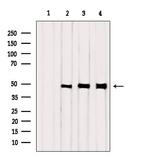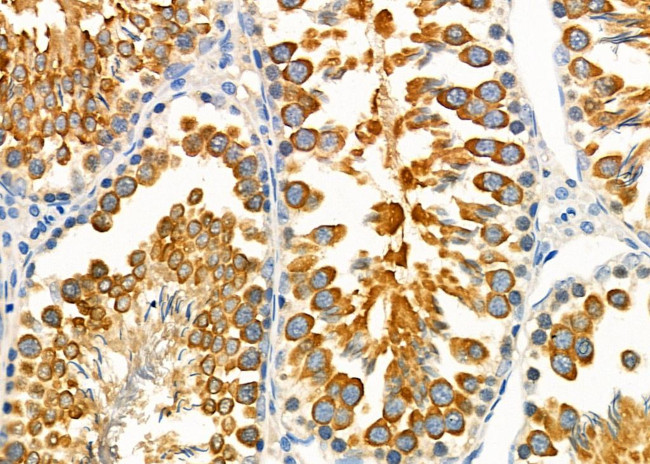Search Thermo Fisher Scientific
FIGURE: 1 / 2
KCNJ14 Antibody (PA5-103645) in IHC (P)


Product Details
PA5-103645
Species Reactivity
Host/Isotype
Class
Type
Immunogen
Conjugate
Form
Concentration
Purification
Storage buffer
Contains
Storage conditions
Shipping conditions
RRID
Product Specific Information
Antibody detects endogenous levels of total KCNJ14.
Target Information
Inward rectifier potassium channels are characterized by a greater tendency to allow potassium to flow into the cell rather than out of it. Their voltage dependence is regulated by the concentration of extracellular potassium; as external potassium is raised, the voltage range of the channel opening shifts to more positive voltages. The inward rectification is mainly due to the blockage of outward current by internal magnesium. KCNJ14 gives rise to low-conductance channels with a low affinity to the channel blockers Barium and Cesium.
For Research Use Only. Not for use in diagnostic procedures. Not for resale without express authorization.
References (0)
Bioinformatics
Protein Aliases: ATP-sensitive inward rectifier potassium channel 14; Inward rectifier K(+) channel Kir2.4; inwardly rectifying potassium channel KIR2.4; IRK-4; IRK4; Potassium channel, inwardly rectifying subfamily J member 14; potassium channel, inwardly rectifying subfamily J, member 14; potassium inwardly-rectifying channel J14; potassium inwardly-rectifying channel, subfamily J, member 14
Gene Aliases: A930026G01Rik; IRK4; KCNJ14; KIR2.4
UniProt ID: (Human) Q9UNX9, (Rat) O70596, (Mouse) Q8JZN3
Entrez Gene ID: (Human) 3770, (Rat) 276720, (Mouse) 211480

Performance Guarantee
If an Invitrogen™ antibody doesn't perform as described on our website or datasheet,we'll replace the product at no cost to you, or provide you with a credit for a future purchase.*
Learn more
We're here to help
Get expert recommendations for common problems or connect directly with an on staff expert for technical assistance related to applications, equipment and general product use.
Contact tech support
